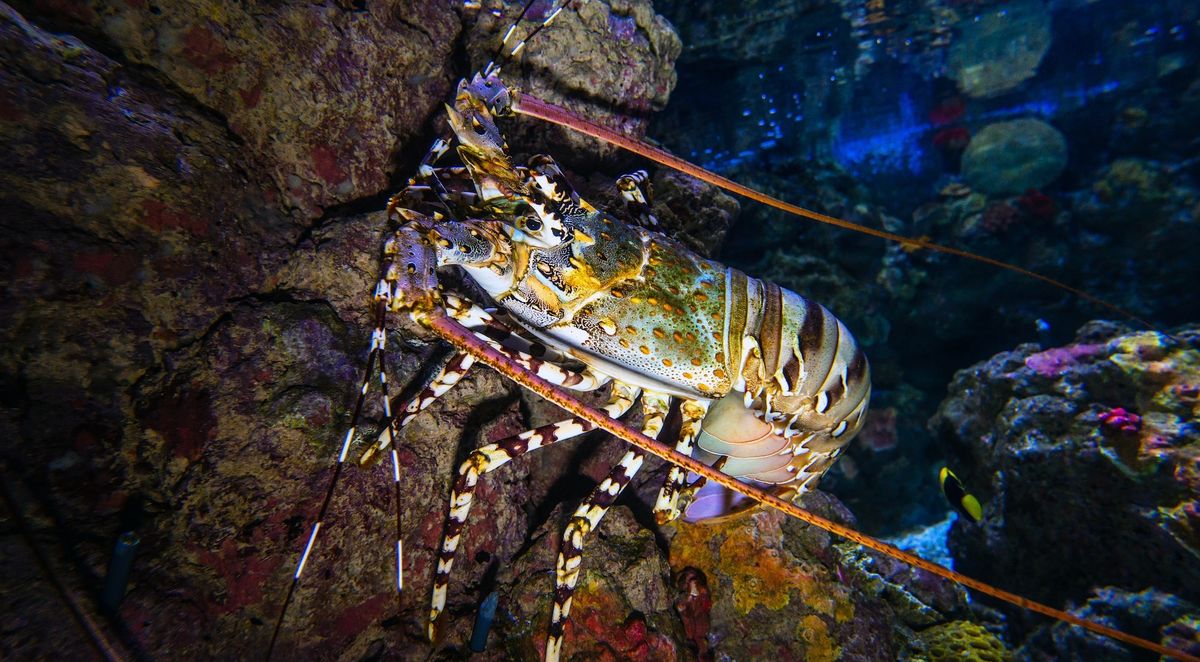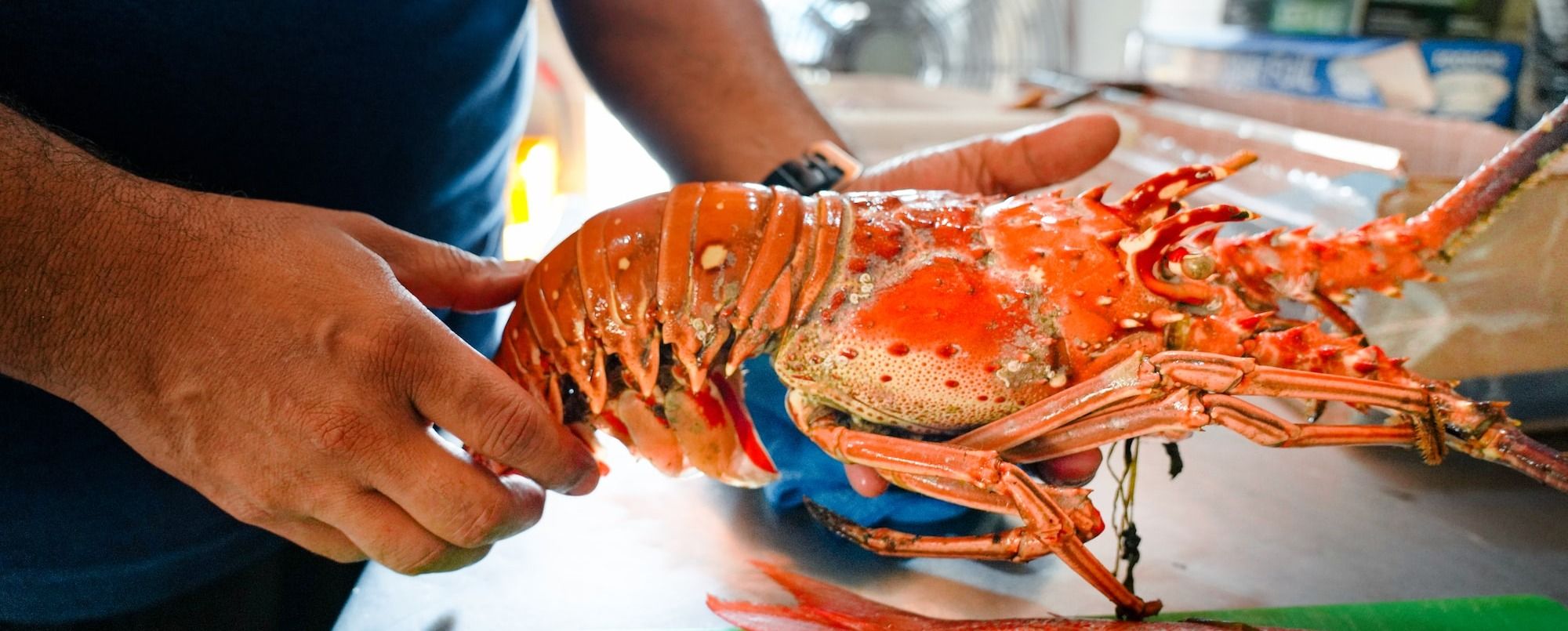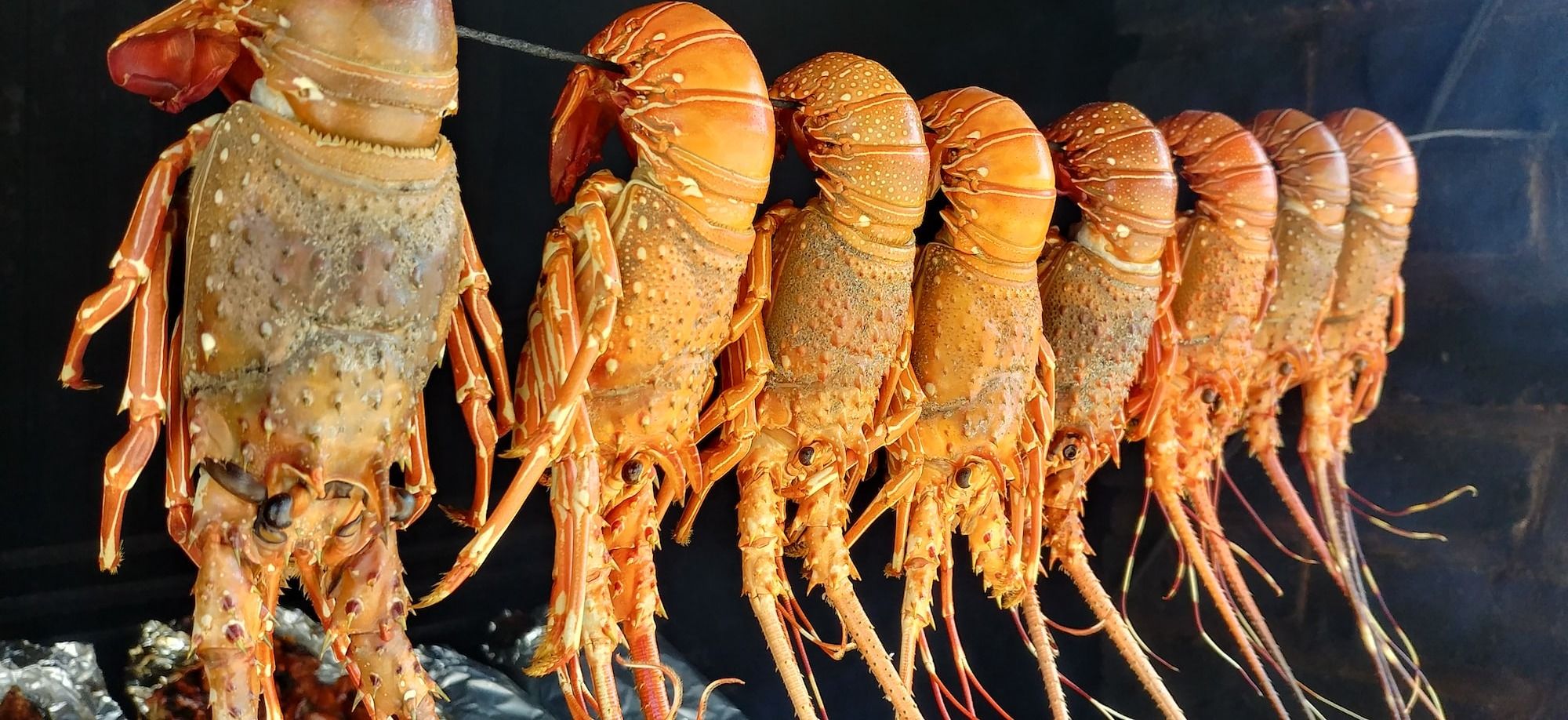What Is The Most Expensive Lobster In The World?
The Pearl Lobsters are the Most Expensive Lobster Varieties

Pearl lobsters, or known as tropical rock lobsters are some of the most expensive lobsters on the market. The high demand of this seafood has even led to illegal trading of their larvae on a global scale.
Farmed pearl lobsters typically sell for about $50 per kilogram, while wild-caught ones can command prices close to $99 per kilogram.
This places them at a cost significantly higher than the cold water Maine lobsters, which are sold for around $15 per kilogram. So, what makes spiny lobsters so uniquely valuable and desirable?
Here's Why Is The Pearl Lobster So Expensive

1) Limited Availability Gives Wild-Caught Pearl Lobsters A Premium Status in The Market
Pearl lobsters, despite their widespread appeal, face the threat of diminishing numbers, mainly attributed to overfishing.
Conservation initiatives have been recently introduced to safeguard these majestic marine creatures and ensure their natural preservation.
Their reproduction in the wild poses challenges. The tropical rock lobster finds breeding particularly complex unless the conditions are perfectly aligned to their natural habitat requirements.
2) Slow Growth
In their growth journey, a pearl lobster weighs around 350g even after 8 months. Moreover, the preferred selling weight is 500g to a kilogram which will take around 18 months. Astonishingly, in the wild, it takes them an extensive 25-27 years to achieve a weight of 2.7 kilograms.
When comparing market prices, farmed lobsters fetch a lesser value than their wild counterparts.
The primary reasons for this discrepancy include the inconsistent supply, paler hues of the farmed varieties, and their perceived reduced vitality, which affects their adaptability to live transportation, especially to high-demand markets in Taiwan, Singapore, Vietnam and China.
3) Keeping Pearl Lobster Healthy Is Difficult and Labour Intensive
Breeding pearl lobster seeds is a lengthy process, taking up to 18 months. Cultivating these lobsters presents challenges due to their delicate nature and high susceptibility to illnesses.
Additionally, they face threats from predators like puffer fish and barracudas. A lobster deemed defective if it loses two legs from one side, rendering it unsellable.
To ensure the safety of their lobsters, breeders routinely inspect and mend their nets every week.
4) Price Fluctuation Influenced by the Seasons
Lobster prices tend to spike during January to February, influenced by the Chinese New Year festivities. Additionally, there's another surge in prices between August to September, coinciding with the influx of international tourists.
During these peak periods, farmed pearl lobsters can fetch up to $50 per kilogram. However, wild-caught lobsters consistently command a premium, priced at $99 per kilogram.
This is because they are often larger and, even if they match farmed lobsters in size, they generally offer more meat, enhancing the dining experience.
5) The Global Demand For Lobster Is Growing
The international market, especially in countries like China, Taiwan, Singapore, and Vietnam, is fueling a surge in demand by roughly 15% annually.
For Indonesia, the primary trading hubs meeting this demand are Bali and Surabaya. The tropical rock lobster, known locally in Indonesia as the Pearl lobster and scientifically as Panulirus ornatus, is particularly sought after.
As the Chinese New Year approaches, the true lobster industry is gearing up to meet the rising demand in China.
Alongside the renowned pearl lobster, Maine lobster is emerging as another highly sought-after delicacy, solidifying its position as a must-have for festive celebrations across Asia.
6) Shipping Lobsters Adds To The Cost
The high cost of lobsters isn't just due to challenges in farming or a preference for wild-caught ones. Post-catch, they require careful shipping.
To ensure they stay alive, lobsters need a cool, moist environment without being submerged in water. It's crucial to avoid placing them on ice prone to melting since exposure to fresh water can cause them to swell, potentially to a dangerous degree.
Proper ventilation is also a must for their containers, as lobsters depend on oxygen. Given the need for meticulous handling and speedy shipping to ensure freshness, costs rise.
Additionally, the potential loss of some lobsters during transit, arriving dead and unfit for consumption, further adds to the price.
How Does the Pearl Lobster Taste?

Pearl lobsters, or tropical rock lobsters, are highly prized for their sweet, succulent, and tender meat. The taste can be described as a richer, sweeter version of the standard lobster flavor, with a slightly firmer texture.
The flavor profile is often influenced by their natural habitat in tropical and subtropical waters, which can imbue them with a distinct taste compared to cold-water lobster species.
Additionally, the method of preparation and the freshness of the lobster can also impact the flavor, but overall, pearl lobsters are considered a delicacy and are favored for their unique and premium taste.
About Pearl Lobster
Panulirus ornatus typically reaches a length of 30–40 centimeters (12–16 inches) and can weigh between 500 grams and 1 kilogram (1 to 2 pounds).
However, some members of this species can grow exceptionally large, surpassing 4 kilograms in weight and reaching lengths of up to 60 centimeters (roughly 24 inches).
Such notable size variations make the Pearl Lobster one of the larger species of lobsters found in the world.
Habitat and Distribution
These lobsters have an extensive range, spanning from the western parts of the Red Sea, through KwaZulu-Natal, all the way to eastern Japan and Fiji.
This broad distribution places them in a diverse set of marine environments within the Indo-Pacific region.
Their adaptability to various marine ecosystems is a testament to their resilience and versatility.
Coloration
The Pearl Lobster are generally in blue-green hue on the shell and other vibrant colors as well— including shades of Black, Green, Red, Blue, and Yellow — aren't just for show.
These colors play a significant role in their survival, aiding in camouflage against predators and during hunting.
The variety in coloration is influenced by several factors including the specific subspecies, the environment they inhabit, and their age. Over time, as they molt and grow, their colors might change, reflecting various stages in their life.
Lifespan
The lifespan of tropical rock lobsters, of which Panulirus ornatus is a part, can vary depending on several factors.
Generally, they live for about 20-30 years in the wild. But what's fascinating is that there are records of certain species within this family living for half a century or even more.
This long lifespan, combined with their adaptability, makes them a subject of interest for marine biologists and researchers.


